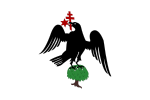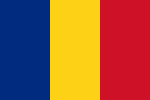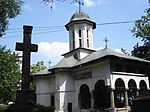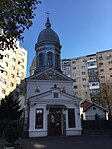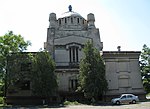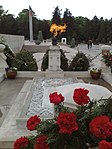Curtea Veche Church
16th-century Eastern Orthodox church buildings16th-century churches in RomaniaHistoric monuments in BucharestLipscaniRomanian Orthodox churches in Bucharest

The Curtea Veche Church (Romanian: Biserica Curtea Veche) is a Romanian Orthodox church located at 33 Franceză Street in the Lipscani quarter of Bucharest, Romania. It is dedicated to the Feast of the Annunciation and to Saint Anthony the Great.
Excerpt from the Wikipedia article Curtea Veche Church (License: CC BY-SA 3.0, Authors, Images).Curtea Veche Church
Calea Șerban Vodă, Bucharest
Geographical coordinates (GPS) Address Nearby Places Show on map
Geographical coordinates (GPS)
| Latitude | Longitude |
|---|---|
| N 44.417053 ° | E 26.101091 ° |
Address
Biserica Ortodoxă „Sfântul Alexie” (Biserica Alexe)
Calea Șerban Vodă 123
040205 Bucharest (Sector 4)
Romania
Open on Google Maps

